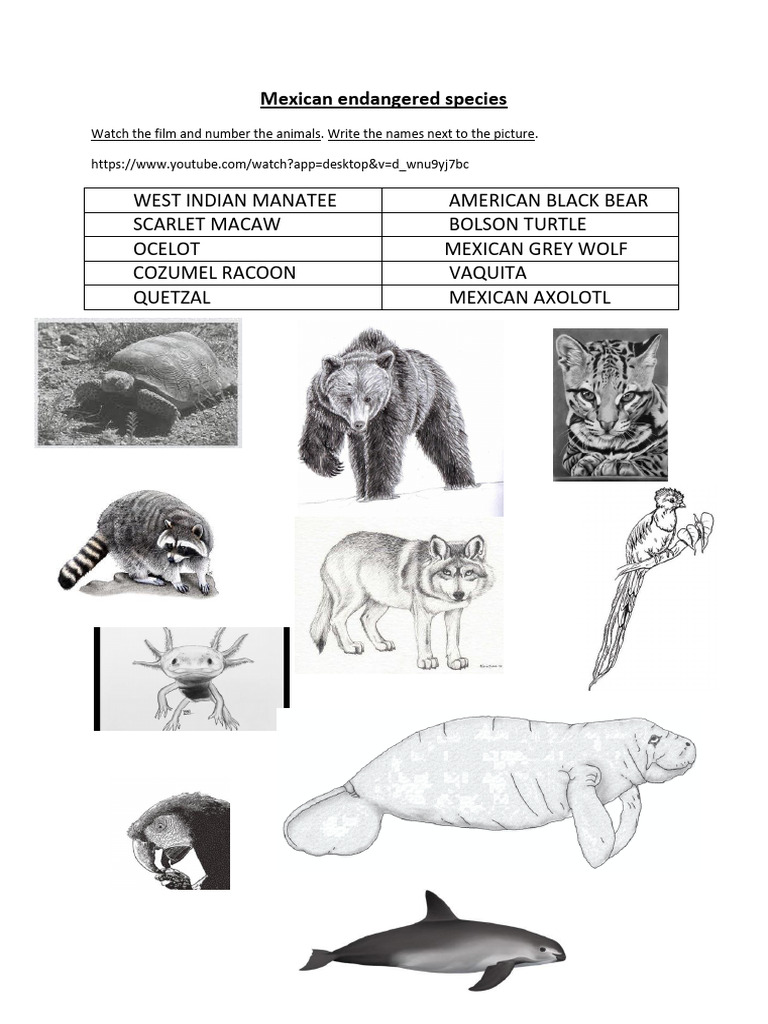Endangered Plants in Mexico You Should Know About
Mexico, with its diverse ecosystems ranging from arid deserts to lush rainforests, is home to a plethora of plant species. Unfortunately, many of these remarkable species are facing extinction due to habitat loss, climate change, and human activities. This article delves into some of the endangered plants in Mexico, shedding light on their ecological significance and the ongoing conservation efforts aimed at preserving these unique treasures of nature.
The Rich Biodiversity of Mexico
To appreciate the urgency of conserving endangered plants, one must first understand the rich biodiversity that Mexico possesses. Hosting approximately 30,000 species of vascular plants, Mexico ranks as one of the world’s megadiverse countries. The country’s varied climate zones foster unique flora, from the towering cacti of the Sonoran Desert to the vibrant orchids of tropical regions. However, this extraordinary biodiversity is under threat, making awareness and conservation efforts critical.
Factors Contributing to Endangerment
Several factors contribute to the endangerment of plant species in Mexico. Urbanization, industrial agriculture, and deforestation have led to significant habitat destruction. Moreover, climate change exacerbates these impacts, altering the habitats in which many plants thrive. Invasive species also pose a threat, outcompeting local flora for resources. This multifaceted danger requires an integrated approach for effective conservation.
Iconic Endangered Plants in Mexico
Among the many endangered plants in Mexico, several species are particularly noteworthy, each with its own unique characteristics and ecological roles. Below, we highlight a few of these remarkable plants, emphasizing their importance.
The Mexican Blue Oak
The Mexican Blue Oak, or *Quercus oblongifolia*, is a deciduous tree native to the Sierra Madre Oriental. Known for its striking blue-green leaves, it provides essential habitat for various wildlife species. Unfortunately, overexploitation, combined with changes in land use, has severely impacted its population. Conservation efforts have focused on habitat restoration and sustainable forestry practices to help stabilize this species’ numbers.
Elkhorn Coral Tree
The Elkhorn Coral Tree, or *Erythrina fusca*, is a stunning flowering tree found along Mexico’s coastal regions. Its vibrant red flowers attract various pollinators and provide shade for local wildlife. Due to urban development and the impacts of salinity and rising sea levels, this species has become endangered. Protecting coastal ecosystems and promoting reforestation is vital to safeguard the Elkhorn Coral Tree’s future.
Threatened Cacti of Mexico
Cacti, an iconic representation of Mexican flora, are also facing significant threats. Several species are on the endangered list, two of which are particularly alarming.
The Michoacán Cactus
The Michoacán Cactus, or *Mammillaria pectinata*, is endemic to the volcanic soils of Michoacán. While this cactus thrives in arid conditions, its habitat is rapidly declining due to agricultural practices and overharvesting for ornamental purposes. Conservationists are working on strategies to cultivate this cactus in nurseries and reintroduce it into its natural habitat.
The Golden Barrel Cactus
Another notable species is the Golden Barrel Cactus (*Echinocactus grusonii*), renowned for its striking spherical form and vibrant yellow spines. This cactus has seen a dramatic decline in its natural populations due to illegal harvesting and habitat destruction. Efforts to protect the Golden Barrel include enforcing laws against poaching and promoting sustainable harvesting practices.
Conservation Initiatives in Action
In response to the alarming decline of plant species, Mexico has implemented various conservation initiatives. These include the establishment of protected areas, where human activities are regulated to preserve their fragile ecosystems. Programs aimed at raising public awareness about the significance of local flora are vital in garnering community support for conservation efforts.
Moreover, collaborations with NGOs and international organizations have proven effective in funding research and conservation projects. Engaging local communities in conservation practices fosters a sense of stewardship and responsibility towards preserving Mexico’s botanical diversity.
Conclusion: A Call to Action
The preservation of endangered plants in Mexico is not only a matter of protecting biodiversity but also ensuring the survival of ecosystems that countless species, including humans, rely on. By raising awareness, supporting conservation initiatives, and promoting sustainable practices, individuals can contribute to preserving these unique plant species for future generations.
As stewards of this precious planet, it is our responsibility to advocate for endangered plants, ensuring their survival amid the myriad challenges they face. Recognizing the inherent value of these species will help foster an enduring relationship between humans and the natural world. A collective effort can create meaningful change, leading us towards a future where the rich botanical heritage of Mexico thrives once more.





Leave a Comment